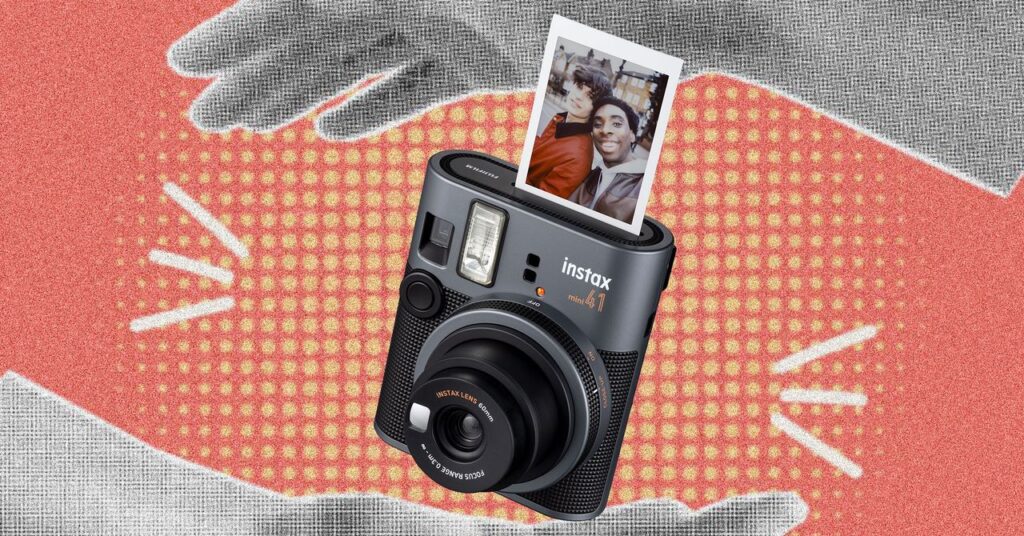The old-school camera styling extends to some plastic knurling on the body and around the lens. This is perhaps where the plasticness comes out the most. The minute you touch it, it feels not like actual knurling but like plastic imitating knurling. If that makes sense. Baudrillard would love it. I found it functional enough, if not entirely pleasant to hold.
One big improvement over the previous model is the new lens design, which matches what we’ve seen in nearly every Instax released in the past year. The lens twists to turn on, then twists further if you want to put it in close-focus mode. This is simple and intuitive and much better than the push level approach of the Mini 40.
This lens offers parallax correction as well, which helps center close-up images (including selfies) by adjusting the position of the “focus” mark in the viewfinder. And fear not, kids, there is still a selfie mirror on the side of the lens.
Mini Magic
Photograph: Fujifilm
The Mini 41 is indeed mini, measuring 4.8 by 4 inches and only 2.4 inches deep. It weighs just under a pound (15.1 ounces) with batteries and film loaded. It probably won’t fit in your pant’s pocket, but it was small enough that I carried it around in a jacket pocket. The batteries are AA, which is nice. Grab yourself a four-pack of rechargable AAs and you’ll never have to worry about replacing the batteries.
Images eject out of the top of the camera and take about a minute and half to develop. I found the automatic focus worked well, and adjusting between normal range and close focus gives you a little extra control. (Be careful, though. The images where I did miss focus were all images where I forgot that I had it in close-focus mode.)
Read the full article here

